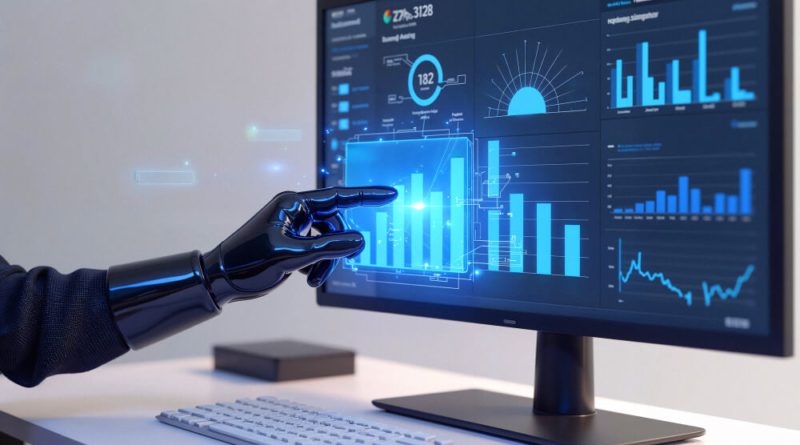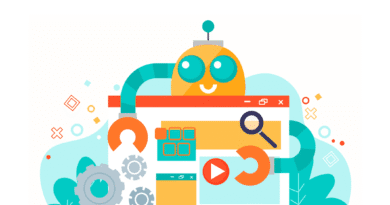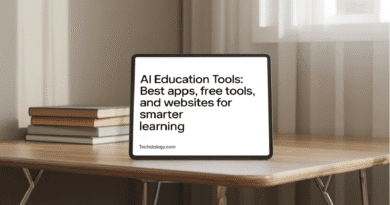How Can AI in Data Analytics Help You Predict Customer Behaviour?
Can you exactly anticipate your customer intent or behaviour?
Well, it’s the most complex puzzle because no gut instincts work in predicting it. The only thing that can help is data. Yes, it carries the pattern that can reveal their thinking and response patterns. All thanks to artificial intelligence or AI that helps in gaining insights into their responses and behaviour patterns.
With these clues, businesses and marketers can transform their campaigns for marketing, sales, and customer services. This post will reveal how exactly AI does it. Let’s get started to learn the magic that AI-driven analytics services do for businesses.
Table of Contents
The Shift from Traditional to Predictive Analytics
Do you know how traditionally we analyze data? Certainly, it is based on what already happened in sales, marketing, purchasing, or anything that you would like to discover. However, this method is still useful, it does answer the “why it happened” and “what the next is likely to occur”.
This is where analysts needed AI-powered data analytics. This technology involves machine learning (ML), natural language processing (NLP), and predictive modeling. Together, these technologies evolve AI that churns historical and real-time data patterns to foresee future behaviours, product interest, and likelihood of purchases.
Let’s understand it with an example. A customer, for example, frequently abandons his cart after browsing a particular hair colour. Now, AI will churn and anticipate that he needs a price drop, better product visuals, or something like faster delivery alternatives to finally purchase it. This is why shifting to the latest methods of analytics is vital.
How AI Predicts Customer Behavior

Scratching your head to understand how AI predicts customer behaviour so wisely? Here comes the answer.
1. Behavioral Pattern Recognition
Analyzing vast datasets is no longer a big deal with AI systems. They meticulously identify behaviour and its trends. No matter whether your objective is to discover purchase patterns, or shortlisting recommendation. This latest technology understands purchase frequency, time spent on webpages, or interaction with email campaigns. And the result surprises while revealing micro-patterns that human eyes might miss.
For example, AI can effortlessly observe that customers buying child’s toys often return for their dresses in a few days or weeks. This type of pattern detection automatically creates timely and personalized offers for them.
2. Segmentation and Personalization
If you compare with traditional static segmentation, AI dynamically segments customer data into their behaviour patterns, preferences, and demographics. Moreover, it consistently updates profiles to ensure fast prompting for marketing.
This is how this revolutionary technology fuels personalization while refining recommendations, tailored pricing, or loyalty rewards. Consider the example of Amazon and Google. Both show AI-driven alternatives for real-time interactions and preferences.
3. Predictive Modeling
Prediction refers to foreseeing or anticipating what is likely to happen. AI stands out in this case. It wisely projects future actions of customers. Let’s consider it in the case of e-commerce or retailers. The seller or reseller can immediately access patterns, showing the following:
- Will customers purchase specific products this week?
- Are they likely to unsubscribe?
- Will they answer a specific promotion?
Certainly, these projections are connected to historical behaviours, peer group comparisons, and external factors like on or off seasons.
A McKinsey study reveals that companies relying on customer analytics are projected to outpace competitors in acquiring customers. And this speed will be 23X more than their competitors.
4. Churn Prediction
High attrition rate is a major concern across industries. This problem can be resolved through this cutting-edge technology. Its tools can identify red flags easy, such as reduced logins, slower browsing behaviour, high bounce rate, and unresponsiveness to emails.
After deep understanding of these points, you may act by sending a re-engagement offer. It reduces attrition and boost lifetime value.
Real-World Use Cases
Now, let’s make it understood through these real-world cases.
➤ Retail
Starting with an example from retailers like Walmart, they use AI to assess browsing behaviour, in-store footfall or purchase patterns, and loyalty activities. Their deep analysis simplifies forecasting what customers are likely to shop next and what products are in their list to buy.
➤ Banking and Finance
In banks, this latest smart technology highlights the list of defaulters and prospective defaulters in a fraction of time. Moreover, some AI apps can also reveal customers who are likely to go to competitors for investment. Overall, it enables banks to customise credit alternatives, payment options, and offer better interest rate or loyalty campaigns.
➤ E-Commerce Marketplaces
Some e-commerce marketplaces like Shopify smartly segment users in real time to define hyper-personalised product journeys. Abandoned cart emails, upsells, and discounts – these are all optimized according to behavioral predictions.
AI Tools That Power Predictive Analytics
Looking for AI tools that can power predictive analytics? Here are some clues:
- Google Cloud AI: This is the most trending and insightful tool that share predictive models by deriving through BigQuery ML and AutoML tables.
- IBM Watson Analytics: This unique tool is outstanding at understand customer sentiments via cognitive computing.
- Salesforce Einstein: This tool uses AI to improve sales and marketing teams’ lead score and projections.
- Microsoft Azure AI – Provides machine learning and predictive modeling with advanced analytics capabilities.
- Amazon SageMaker – Enables building, training, and deploying ML models quickly for customer behaviour predictions.
- HubSpot AI – Optimizes marketing campaigns and personalizes user interactions with predictive insights.
- DataRobot – Automates ML model building to forecast trends and customer actions.
- H2O.ai – Open-source AI platform for predictive analytics across industries.
- Tableau with Einstein Analytics – Visualizes data patterns and predictive insights efficiently.
- RapidMiner – An AI-powered data science platform to detect patterns and predict user behaviour.
Using these tools is indeed a pack of benefits. They process data from websites, CRMs, and apps while integrating social media signals, purchase history and support tickets. It creates a 360-degree overview of customers.
Using these tools is indeed a pack of benefits. They process data from websites, CRMs, and apps while integrating social media signals, purchase history, and support tickets. It creates a 360-degree overview of customers.
Ethical Use and Data Privacy
Certainly, AI has halved the battle of discovering insights and predicting customer behaviour. Simultaneously, these insights can threaten companies with unethical and data privacy concerns. Some crucial regulations like GDPR and CCPA direct companies to maintain transparency and data security. Also, it ensures attaining consent of data subjects.
Companies that prioritize ethical AI quickly earn customer trust and long-term loyalty. It impacts growth in consumers’ count and the ethical use of their data.
Conclusion
In the digital world where data streams in from all around, analytics has become a crucial factor. It helps in anticipating but not only reacting to customer intent. Companies can boost retention, optimise marketing spend, or improve user experience anticipating behaviour of customers. This is possible by integrating AI, which ensures smarter services and excellent customer experience.




